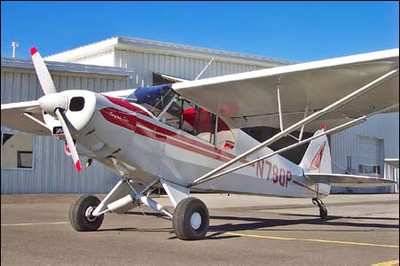One Did Not... and A CFIT Accident Resulted
 There are a number of potential
lessons to be learned from the some of the data released as part of
NTSB preliminary report... detailing the tragedy that occurred as
two aircraft proceeded into deteriorating conditions in rough
territory. When the lead aircraft pressed on, the following
aircraft's pilot grew wary of the flight and ultimately decided to
execute the most important maneuver in EVERY pilot's repertoire...
the 180 degree turn. Tragically, the lead aircraft did not and went
down in rising terrain... at the end of a canyon.
There are a number of potential
lessons to be learned from the some of the data released as part of
NTSB preliminary report... detailing the tragedy that occurred as
two aircraft proceeded into deteriorating conditions in rough
territory. When the lead aircraft pressed on, the following
aircraft's pilot grew wary of the flight and ultimately decided to
execute the most important maneuver in EVERY pilot's repertoire...
the 180 degree turn. Tragically, the lead aircraft did not and went
down in rising terrain... at the end of a canyon.
NTSB Identification: ANC10FA069
14 CFR Part 91: General Aviation
Accident occurred Thursday, August 12, 2010 in McGrath, AK
Aircraft: PIPER PA-18-150, registration: N2413H
Injuries: 2 Fatal.
This is preliminary information, subject to change, and may
contain errors. Any errors in this report will be corrected when
the final report has been completed.
On August 12, 2010, about 1500 Alaska daylight time, a
single-engine Piper PA-18-150 airplane, N2413H, was substantially
damaged during a loss of control and subsequent impact with terrain
near McGrath, Alaska. The pilot and passenger sustained fatal
injuries. The airplane was registered to and operated by a private
individual. Instrument meteorological conditions prevailed, and no
flight plan was filed for the 14 Code of Federal Regulations Part
91 personal flight. The 162 nautical mile cross-country flight
originated from Tanana, Alaska, and was en route to McGrath,
Alaska.
The accident airplane was lead for a flight of two Super Cubs
that had been on a 10 day excursion. The pilot of the second
airplane reported that while following the lead airplane towards
McGrath, he noticed that the weather was deteriorating in front of
them. He stated that the weather to the west and east appeared
better; however, the lead plane continued straight ahead towards
the Sunshine Mountains and an area of worsening weather. Thinking
perhaps that the lead pilot was aware of a pass through the
Sunshine Mountains, he continued to follow.
The second pilot said that once they passed the first mountain
ridge the weather became turbulent, dark, and rainy, and that both
airplanes had to descend to remain clear of clouds. Around this
time the pilot of the lead airplane radioed, “buddy are you
still with me?” The second pilot responded
“barely” and then lost sight of the lead airplane. As
soon as the second pilot lost sight of the lead airplane, he
radioed that he was “out of here” and turned around.
The lead pilot did not respond.
The second pilot further reported that approximately 3 minutes
after he turned around he heard a short burst of noise on the radio
that sounded like an “open microphone.” He repeatedly
attempted to contact the lead pilot to no avail, and eventually
continued on to McGrath via a different route. The airplane
wreckage was located later that day on rising terrain at the end of
a canyon.

PA18 File Photo
The NTSB investigator-in-charge (IIC) arrived on scene the
following day (August 13) and examined the wreckage. The airplane
came to rest upright with its nose pointing downhill on a estimated
heading of 130 degrees. Impact signatures were consistent with a
left wing and nose low impact. There was no evidence of a postcrash
fire. All major components were accounted for and control
continuity was established to all flight controls. The engine
propeller had separated from the engine crankshaft. Both propeller
blades exhibited chord-wise scratches and gouges. The outer tips of
both propeller blades had been torn off during impact with the
rocky terrain. The airplane was not equipped with shoulder
harnesses and neither occupant had been wearing a lap belt. In
addition, the emergency locator transmitter was found in the
“OFF” position.
 Classic Aero-TV: The Switchblade Flying Car FLIES!
Classic Aero-TV: The Switchblade Flying Car FLIES! ANN FAQ: Q&A 101
ANN FAQ: Q&A 101 ANN's Daily Aero-Term (04.12.24): Discrete Code
ANN's Daily Aero-Term (04.12.24): Discrete Code ANN's Daily Aero-Term (04.13.24): Beyond Visual Line Of Sight (BVLOS)
ANN's Daily Aero-Term (04.13.24): Beyond Visual Line Of Sight (BVLOS) ANN's Daily Aero-Linx (04.13.24)
ANN's Daily Aero-Linx (04.13.24)




